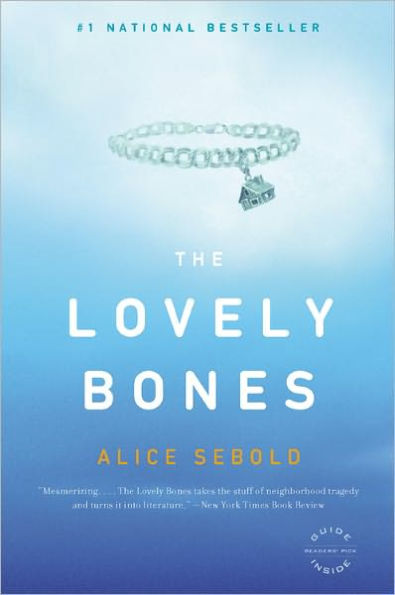No one knows what happens when we die. Religions, pyramids, and entire industries have cropped up in response to humanity’s quest to solve the mystery without, you know, actually dying. Arguably the entire institution of literature is a response to death—either to ruminate and philosophize on The End, or to snatch a piece of literary immortality. A few authors […]
"My name was Salmon, like the fish; first name, Susie. I was fourteen when I was murdered on December 6, 1973."
So begins the story of Susie Salmon, who is adjusting to her new home in heaven, a place that is not at all what she expected, even as she is watching life on earth continue without her — her friends trading rumors about her disappearance, her killer trying to cover his tracks, her grief-stricken family unraveling. Out of unspeakable tragedy and loss, The Lovely Bones succeeds, miraculously, in building a tale filled with hope, humor, suspense, even joy.
1100259243
So begins the story of Susie Salmon, who is adjusting to her new home in heaven, a place that is not at all what she expected, even as she is watching life on earth continue without her — her friends trading rumors about her disappearance, her killer trying to cover his tracks, her grief-stricken family unraveling. Out of unspeakable tragedy and loss, The Lovely Bones succeeds, miraculously, in building a tale filled with hope, humor, suspense, even joy.
The Lovely Bones
"My name was Salmon, like the fish; first name, Susie. I was fourteen when I was murdered on December 6, 1973."
So begins the story of Susie Salmon, who is adjusting to her new home in heaven, a place that is not at all what she expected, even as she is watching life on earth continue without her — her friends trading rumors about her disappearance, her killer trying to cover his tracks, her grief-stricken family unraveling. Out of unspeakable tragedy and loss, The Lovely Bones succeeds, miraculously, in building a tale filled with hope, humor, suspense, even joy.
So begins the story of Susie Salmon, who is adjusting to her new home in heaven, a place that is not at all what she expected, even as she is watching life on earth continue without her — her friends trading rumors about her disappearance, her killer trying to cover his tracks, her grief-stricken family unraveling. Out of unspeakable tragedy and loss, The Lovely Bones succeeds, miraculously, in building a tale filled with hope, humor, suspense, even joy.
18.99
In Stock
5
1

The Lovely Bones
368
The Lovely Bones
368Paperback(Reprint)
$18.99
18.99
In Stock

Product Details
| ISBN-13: | 9780316168816 |
|---|---|
| Publisher: | Little, Brown and Company |
| Publication date: | 04/20/2004 |
| Edition description: | Reprint |
| Pages: | 368 |
| Sales rank: | 19,769 |
| Product dimensions: | 5.50(w) x 8.20(h) x 1.00(d) |
| Lexile: | 890L (what's this?) |
| Age Range: | 14 - 18 Years |
About the Author

What People are Saying About This
From the B&N Reads Blog
Videos

